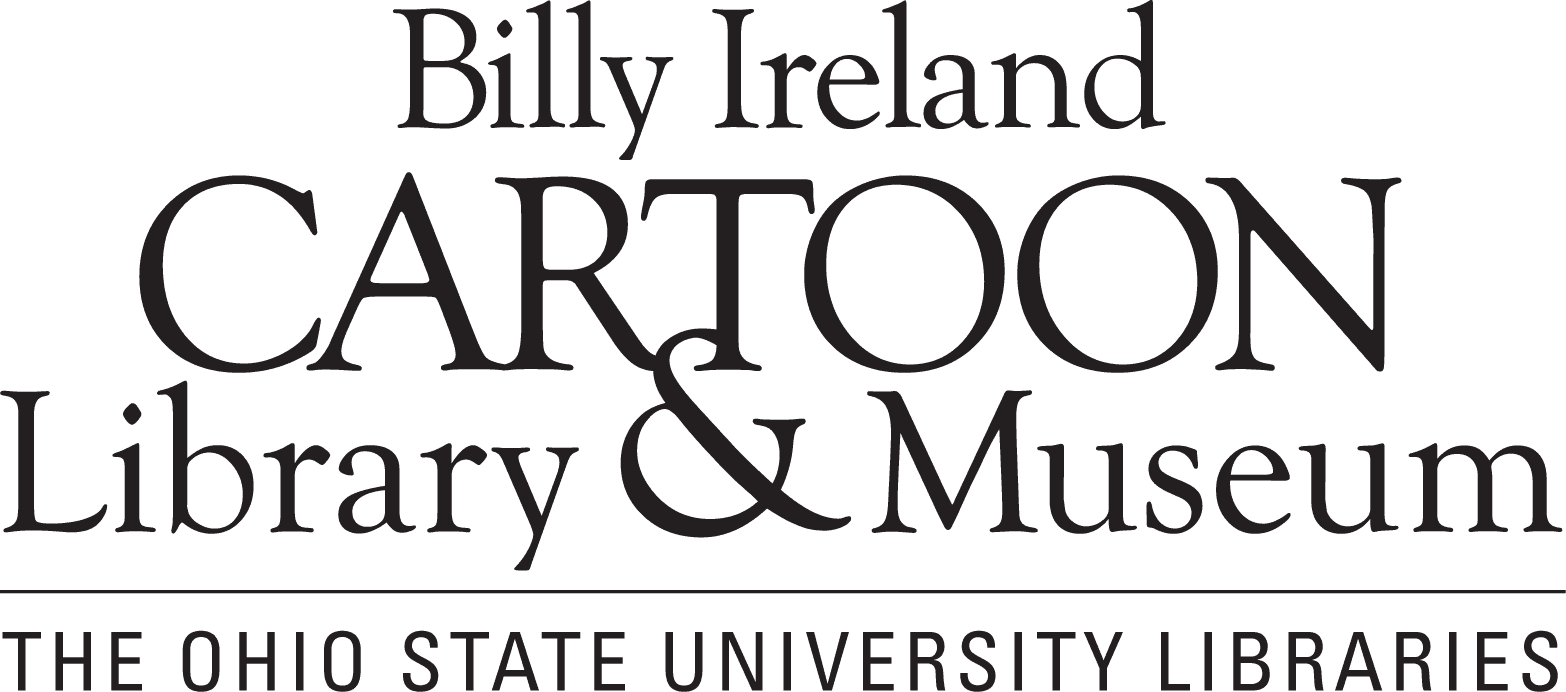Disability in Comics and Cartoon Art
by Sarah Clawson, Student Assistant
Each month the student assistants at the Billy Ireland curate a selection of their favorite graphic novels and comics on a variety of topics to display in the Lucy Shelton Caswell Reading Room. For November, I chose to create a selection of pieces that demonstrate how disability is portrayed in modern comics and graphic novels. My interest in disability studies started a little over a year ago when I was placed at an inclusive school through a field experience at OSU. My classroom was composed 42% of students who had a developmental disability and 58% of typically developing peers. In this first experience with inclusion, I immediately saw the importance of representation in literature. There were so few books that provided my students with a mirror to see themselves represented. This inspired me to seek out books that included a diverse range of characters, especially those whose intersectionality included disability. When I began working at the Billy around this same time, I was thrilled to find comics and graphic novels in our collection representing a diverse range of characters, including those with varying abilities.
Over 20 disabilities are represented in the selections I chose for this month’s Staff Picks, ranging from mental illness, visual impairments, and hearing impairments to learning disabilities and cancer. There are over 30 titles included, which is just a sample from the collection of comics and graphic novels we have featuring characters with disabilities. I’ve learned about some of the books I chose in classes here at OSU, such as El Deafo by Cece Bell. El Deafo was one of the first graphic novels I found written about a main character who was hearing impaired, reflecting the author’s own hearing impairment. Many of the books in the selection are written autobiographically, telling the stories of the varying abilities that the authors lived with.
Each of the pieces I selected for this month’s Staff Picks feature disability in a different way. Some focus on the disability as the center of the story, such as Epileptic by David B. and Mis(h)adra by Iasmin Omar Ata. Other stories feature characters whose disability is not the main component of the story, such as Madame Web in The Amazing Spiderman by Stan Lee, who has a neuromuscular disease. Another such example is Ben from Wonderstruck by Brian Selznick, who is deaf. I also chose to include a reference text in the collection titled Death, Disability, and the Superhero: the Silver Age and Beyond by Jos Alaniz. This book explores representations of disability in superhero comics, and is a great place to find further sources for reading. I hope to continue to add pieces to this collection as they become available in hopes of providing our diverse community of readers with representations of themselves in comic and cartoon art, and providing those who may not have disabilities with opportunities to expand their knowledge on the subject. Stop in to the Lucy Shelton Caswell Reading Room to explore these selections, or email us at cartoons@osu.edu to learn more. The Reading Room is located on the north side of Sullivant Hall at 1813 North High Street and is open from 9:00am to 5:00pm Monday through Friday, as well as Sundays from 1:00pm-5:00pm during OSU’s Spring and Fall semesters.





Recent Comments